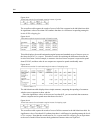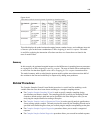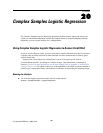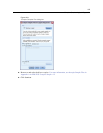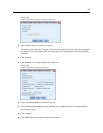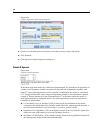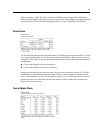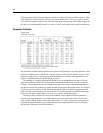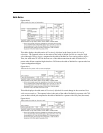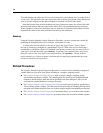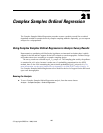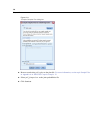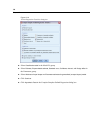
192
Chapter 20
Each term in the model, plus the model as a whole, is tested for whether its effect equals 0. Terms
with significance values less than 0.05 have some discernible effect. Thus, age, employ, debtinc,
and creddebt contribute to the model, while the other main effects do not. In a further analysis of
the data, you would probably remove ed, address, income,andothdebt from model consideration.
Parameter Estimates
Figure 20-9
Parameter estimates
The parameter estimates table summarizes the effect of each predictor. Note that parameter values
affect the likelihood of the “did default” category relative to the “did not default” category. Thus,
parameters with positive coefficients increase the likelihood o f default, while parameters with
negative coefficients decrease the likelihood of default.
The meaning of a logistic regression coefficient is not as straightforward as that of a linear
regression coefficient. While B is convenient for testing the model effects, Exp(B) is easier to
interpret. Exp(B) represents the ratio change in the o dds of the event of interest attributable to a
one-unit increase in the predictor for predictors that are not part of interaction terms. For example,
Exp(B) for employ is equal to 0.798, which means that the odds of default for people who have
been with their current employer for two years are 0.798 times the odds of default for those who
have been with their current employer for one year, all other things being equal.
The design effects indicate that some of the standard errors computed for these parameter
estimates are larger than those you would obtain if you assumed that these observations came
from a simple random sample, while others are smaller. It is vitally important t o incorporate the
sampling design information in your analysis because you might otherwise infer, for example,
that the age coefficient is no different from 0!



